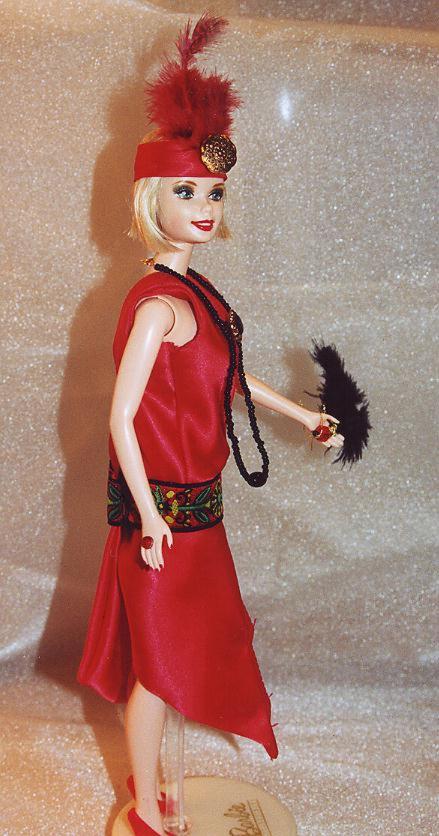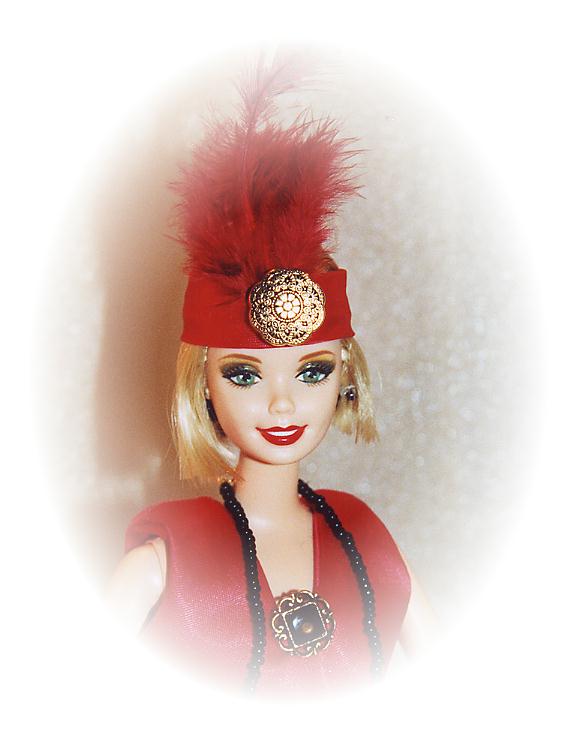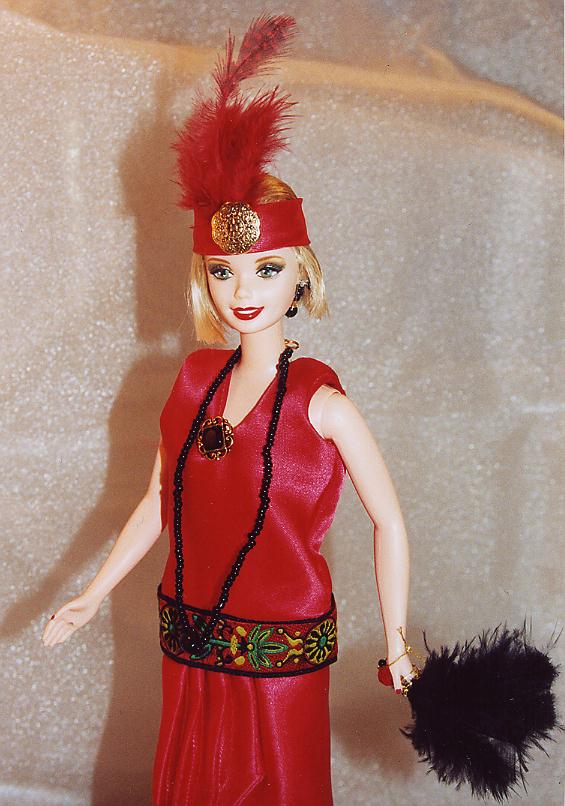 |
 |
 |
|
Ladie Faire Doll Designs
|
 |
 |
 |
|
Home | Medieval/Renaissance Designs | Antebellum "Belles" | Victorian and Edwardian Designs | Other Period Designs | Faerie/Fantasy Designs
|
 |
 |
|
36th OOAK Design:
THE FLAPPER
by Dorothy Parker
The Playful flapper here we see,
The fairest of the fair.
She's not what Grandma used to be, --
You might say, au contraire.
Her girlish ways
may make a stir,
Her manners cause a scene,
But there is no more harm in her
Than in a submarine.
She
nightly knocks for many a goal
The usual dancing men.
Her speed is great, but her control
Is something else again.
All spotlights focus on her pranks.
All tongues her prowess herald.
For which she well may render thanks
To
God and Scott Fitzgerald.
Her golden rule is plain enough -
Just get them young and treat them rough.
|
 |
 |
 |
 |
|
This design represents the "Flapper" style (this term was coined by F. Scott Fitzgerald). The 20's were a time
of great innovation in fashion design and start of celebrity designers such as Coco Chanel. Pauline is dressed in the latest
fashion, ready to go to a club to listen to Jazz and Ragtime music and dance the Charleston!
After the horrors of World War I and the technological and industrial advances of the turn of the century,
the "Roaring Twenties" brought in great social change. For women the changes were most drastic. The stuffy, staid "little
woman" of the Victorian era roared out of the quiet parlor in a fast car!

|
| Pauline |
| Pauline |

|
Manner of dress and appearance were the most obvious changes--they were almost the exact opposite of what
had been seen as proper and womanly in the previous decades. Hair was bobbed, skirts went up to the knees showing previously
scandalous amounts of stocking and the "rouged knees" sung about in "Chicago." The exaggerated hour-glass figure was replaced
by an exaggerated boyish figure as corsets were replaced by less restrictive foundation garments that skimmed the body and
smoothed the figure, and waistlines dropped to the hip, in what Paris designers called the "garçonne silhouette."
|
 |
|
 |
 |
 |
 |
 |
 |
 |
|
| Pauline |

|
Women's behavior also changed as they did things that were once seen as improper and only suited to men:
sports, driving, smoking, drinking, dancing, going out in public whether to jazz clubs, dance halls, political rallies, or
speak-easies. And not all of what the "Flapper Girls" and "Jazz Babies" did were social amusements and vices--women's suffrage
went through in the twenties and overall, women embarked on the road to becoming forces in society.
| Pauline |

|
The dress is made of brilliant red satin with a sleeveless, dropped-waist bodice and an assymetrical, tulip-shaped,
wrap skirt, punctuated with four pleats in front. The waist-band is a fabulous, deco-style floral ribbon. When
she arrives for the evening, she wears a fabulous beaded wrap (made of translucent red ribbon, lightly wired so it holds its
shape), which can be wrapped around her bare arms or thrown casually over a shoulder, but she won't be wearing it for long--Pauline
wears her red dancing shoes and is ready to cut a rug!
|
|
 |
|
|
|
 |
 |
 |
|
|
 |
 |
 |









